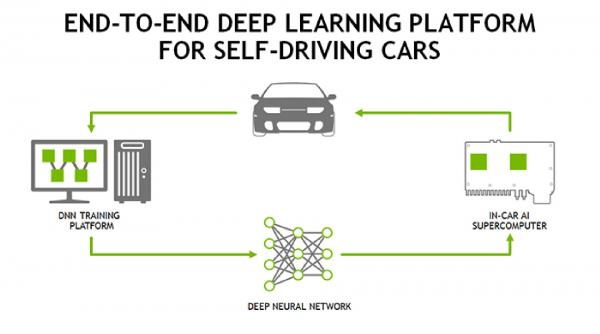LAS VEGAS — CES kicked off with Unveiled, an arena for up-and-coming innovative brands along with some with longstanding industry staying power to exhibit their products and gizmos. Open exclusively to the press, [a]listdaily joined the fracas at the Mandalay Bay Convention Center to see what was actually fire, and what was only smoke. While tech titans are slowly matriculating into Las Vegas, the CES Unveiled proceedings served as a prime appetizer for the gadget-hungry masses. In the process, we collected enough flash drives bearing press kits and announcements to sink the Titanic.
But back to the news. Gamers who like the real-deal when it comes to experience rejoice! Immersit is looking to add 4D motion to virtual reality gaming by the end of this year. The product uses a VR headset to enhance 360-degree video. Gamers will be able to place the product underneath a couch or chair to add another dimension to their game play. The antiquated rocking chair now has new meaning.
Arkamys was in town to show how 360-degree positional audio helps drivers react instantly to threats in a car simulation. CEO Philippe Tour explained that his product plays sound alerts from the direction of the actual threat as collected from a car s onboard sensors. Without such a system, collision alerts are just beeps that warn of danger. We can see in only one direction, but we hear sounds coming from everywhere. Adding positional audio to something, whether for entertainment or safety, provides a more complete and more natural experience, he said.
https://twitter.com/ArkamysNews/status/677919644666171392/photo/1
Speaking of car safety habitual texters and car multitaskers: put down your McDonald s bag meet your new road warrior. Smartwheel is looking to help put an end to the litany of distracted drivers that lead to harrowing headlines and even death by delivering real-time alerts when a driver has one hand off the wheel for too long or has no hands on the wheel at all. The snap-on wheel cover is like having mom or dad in the car right next to you. Forever.
https://twitter.com/SMARTwheelUSA/status/684161168005443585/photo/1
And speaking of people who love to text, LG showed off two new phones via the K10 and the K7. They also debuted super UHD TVs that you can roll up like a newspaper. Yes, you read that correctly. When was the last time you swatted a fly with your TV Exactly. Much like other products brands are pumping up at CES too many to name here LG said it s possible these TVs will never hit stores. They just want to show off what s possible, even if it s not marketable. Who said newspapers aren t marketable
Living in Digital Times focused on products that pushed the boundaries of lifestyle innovation like a powered robot dog, a wearable tech bracelet, kitchen appliances and others. Their marketing and lifestyle focuses on from kids to fitness, from health to digital home, said Robin Raskin, the company s founder and president.
WowWee s robo-dog was an eye-catcher as attendees worked their way through the exhibit floor. The robotics manufacturer also released R.E.V. Air and Lumi, aiming to push the limits of hi-tech, robotic flying fun game players by employing the latest in Mechatronics. The company will continue on its path of providing innovation with proprietary technology to deliver exciting experiences to robotics and youth electronics, said WowWee Canada president Richard Yanofsky.
https://twitter.com/CES/status/684169287871799296/photo/1
Kensington announced the availability of its new expert mouse wireless trackball. It addressed several user requirements, primarily the need to minimize desktop clutter and increase flexibility, said Anita Chang, the company s global product manager.
Blink is using some of the scratch from its $5.8 million investment to be the next big thing in smart home monitoring systems by taking on the competition with affordability and battery life.
Energy technology company Intelligent Energy unveiled prototypes powered by an embedded hydrogen fuel cell, with hopes of providing a solution to the battery life conundrum facing consumers today. According to Julian Hughes, managing director for the company s consumer electronics division, it can be scaled for a vast range of commercial applications either to independently power the device or complement the existing battery, extending device life by up to an entire week.
If waking up to sizzling bacon wafting in the air each morning is wrong, we don t want to be right. Sensorwake is an alarm clock that first uses scents for three minutes to get you out of bed. Other scents it sprays into air is coffee, and money.
An alarm clock that emits the smell of money into the air at a Las Vegas convention show Technology just hit the jackpot it s work here is done.
 Although not everyone is warm to the idea about self-driving cars, even though some car companies have already begun presenting examples, Nvidia provided plenty of stats to back up its technology. It indicated that an estimated 93 percent of car crashes are caused by human error, resulting in the death of 1.3 million drivers each year. It also stated that many American teenagers die from these accidents, with texting being the main cause.
Although not everyone is warm to the idea about self-driving cars, even though some car companies have already begun presenting examples, Nvidia provided plenty of stats to back up its technology. It indicated that an estimated 93 percent of car crashes are caused by human error, resulting in the death of 1.3 million drivers each year. It also stated that many American teenagers die from these accidents, with texting being the main cause. Many predict that the mobile games industry will consolidate until only a handful of big companies are in control. What will it take to compete in mobile gaming’s future
Many predict that the mobile games industry will consolidate until only a handful of big companies are in control. What will it take to compete in mobile gaming’s future  In what ways do you see mobile game streaming differing from traditional console and PC game streams
In what ways do you see mobile game streaming differing from traditional console and PC game streams 
